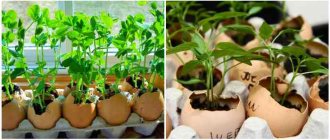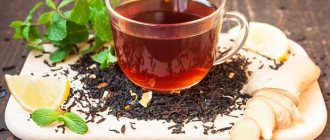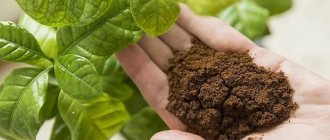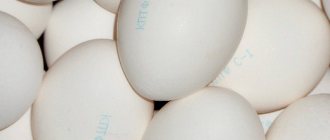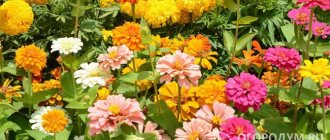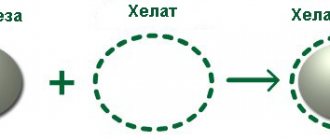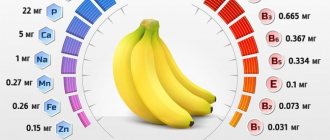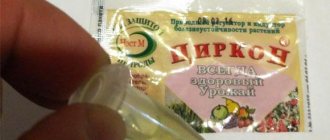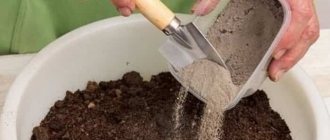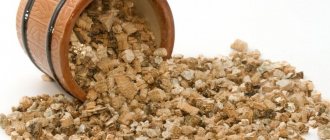Hi all! Some gardeners have no idea how many useful properties the familiar egg shells have, like fertilizers. Therefore, you should not rush to throw away the shells after cooking scrambled eggs or baking.
The nutrients contained in it are an inexpensive but effective fertilizer for garden and agricultural crops. So do ash, manure and chicken droppings.
Of course, the shell itself will not provide the plants with adequate nutrition, but as an additional feeding and maintaining the required calcium balance, this is an excellent solution.
What plants are eggshells used for?
This product consists largely of calcium, which is a component of agricultural lime.
As a result of the study, it became known that water infused on the shell contains 4 mg of calcium and potassium, as well as small amounts of phosphorus, magnesium and sodium.
The main advantage of a natural product as a fertilizer is its availability, because almost all housewives use eggs in their usual dishes.
Then why not leave the shells for further processing and use in the garden or for indoor flowers?
This fertilizer is well suited for most crops and garden flowers. Thus, experienced gardeners use shells for cabbage, currants and raspberries, nightshades, melon and watermelon. An infusion of eggshells is used to obtain a good harvest of beets, zucchini, cucumbers, onions and herbs. Strawberries can also be fed with this fertilizer.
They also respond well to shells and flowers: both annual and perennial. But of course, you first need to find out how to use the shell correctly and in what quantities before you start using it directly.
Signs of excess and deficiency of essential substances
In addition to constantly feeding indoor plants, shells can also be used to replenish the deficiency of certain substances. The main thing is, of course, calcium, which, as you know, the shell of eggs is rich in. But other substances can also be obtained from it. True, their quantity is still not as large as required for a complete diet, and an additional source is needed, for example, phosphorus, magnesium or nitrogen.
Signs of calcium deficiency in a “green pet”
But before you try to fill this deficiency, you should understand that it still exists. If flowers lack calcium, then the following points will indicate this:
- weak, thin, pale shoots that die quickly;
- yellowness along the edges of the leaves;
- the leaves become crooked and curl inward;
- short roots;
- the places where new shoots grow are deformed or they die.
In general, the lack of this element is easy to notice. It is responsible for the vitality and strength of shoots, and the absence of calcium instantly turns a beautiful plant into something sick and dull. Gradually, the death of the flower may even occur if the necessary measures are not taken in time. That is, it is necessary to start fertilizing with compounds containing the necessary elements in large quantities. And this is where the shell will help.
But you also need to be careful with increased calcium supplementation. An excess of this substance is harmful to plants. If the leaves on the flowers begin to turn yellow, and the veins become dark, then, most likely, it is worth limiting feeding with mixtures containing this substance.
Signs of excess calcium in a houseplant
In addition to deteriorating the general condition and appearance of indoor flowers, calcium interferes with the absorption of other microelements. This may result in spots on the leaves, changes in color, shape, falling buds, curvature of shoots and other negative manifestations - this means that the flower lacks some nutrients. And it is not at all necessary to increase feeding. Perhaps you just need to cut down on additional nutrition with calcium mixtures.
We can definitely conclude that eggshells are very beneficial for indoor plants. Moreover, it is also an almost free fertilizer that can be made quickly at home. But, like any other fertilizer, it should be used carefully, without being overzealous. Otherwise, instead of beautiful plants, you may end up with stunted and diseased ones, which will then take a long time to restore.
If you immediately start caring for your pets correctly, maintaining balance in everything, there will be no more problems with flowers. Except for one thing – where to find a place for new pets. After all, when everything works out and the result of care is visible, you want to buy more and more potted plants.
Waste from our table: fertilizer for soil from shells
Related Materials:
Fertilizing indoor plants with ash
We feed roses with urea: how and when- Fertilizing orchids at home
- Feeding and fertilizing garden lilies throughout the season
(adsbygoogle = window.adsbygoogle || []).push({});
How to add and use eggshells for the garden
This egg product can be used in different ways for the garden: as an infusion, crushed and poured directly into the soil, mixed with ash, made into flour to feed plants.
Typically, gardeners prepare an infusion for plants, and gardeners who grow vegetables grind it into powder and pour it into the ground.
Before using such a product on your site, you need to understand that it is not enough to simply scatter the shells around the garden. It must be properly prepared.
Here are the preparation steps that must be followed so as not to harm the plants. It is recommended to rinse the product under water, preferably using soap or soda solution so that no pathogenic microbes remain.
Next, it is important to dry the shell well: this will take from five hours to a day. Drying must be done carefully, as otherwise mold may appear on the product.
So, the main stages of shell preparation are as follows:
- Thorough washing in soda solution;
- Drying throughout the day;
- Grinding using a blender, hammer, mortar, coffee grinder;
- It is also advisable to remove the film from the back side.
Some experts say that this product must be boiled to destroy all existing or possible microbes and pathogens on the shell. In this case, the process of boiling the shells should last at least five minutes.
To prepare the crust, it is important to use only homemade eggs, since store-bought eggs often contain antibiotics or chemical additives.
There is a universal method that can be used for any plants. This is the method most often used by gardeners in their plots so that plants do not have calcium deficiency.
For this method, you just need to grind the shell into powder, then the resulting substrate can be used to fertilize the soil.
The crushed shells are applied directly into the soil - up to three hundred grams of fertilizing will be required per square meter of garden soil. This recipe will not harm plants in any way, so it is suitable for all crops, garden flowers, trees and shrubs.
Even when only flowers grow in the garden, they can also be fertilized with shells. In this case, it is best to make an infusion, which can then be used to water both garden and indoor flowers.
For this method, the shells must also be crushed, preferably very finely. Pour boiling water over and leave for a day. After a day, it is recommended to strain the water to use for watering flowers.
Eggshells as fertilizer for the garden in spring
A lack of calcium causes an increase in the acidity of the soil where vegetables and flowers grow. And this, in turn, adversely affects the further development of the root system and worsens metabolism.
Due to a lack of calcium, fungal diseases appear and parasites begin their active life activity. And over time, the roots of crops rot.
It is better to prevent such an unfavorable situation: to do this, it is necessary to apply calcium-rich fertilizers every spring. The most effective and cheapest is the shell.
In the spring, when the snow has thawed and the ground is still quite wet, you need to dig up the soil, at the same time adding the necessary fertilizers.
Experts recommend finely crushing egg shells and adding them to the soil along with ash, but they can be mixed with compost or other organic fertilizers.
Some gardeners add ash to the soil when planting vegetables: this method is also acceptable, especially for beets, zucchini, and cabbage.
When planting, you need to mix the soil with shell flour, adding a little ash or sand if necessary, so that the water in the soil does not stagnate.
By the way, the product has a good effect on the air permeability of the soil; thanks to this fertilizing, the soil becomes looser and better saturated with oxygen.
To add shells to the soil in spring, you need to prepare the powder using the following method:
- It is necessary to take the shells of fresh and always raw eggs, wash them well in a soda solution or with soap and boil for at least five minutes.
- Next, remove from the water, place on paper towels and leave in this form until completely dry: this approximately takes at least five hours.
- Then you need to remove the films from the back of the shell and grind into powder using a blender or mortar. The fertilizer is ready for use: it is recommended to apply it to the soil in the spring, during planting of crops or in the fall, as needed.
Infusion of eggshells for plant nutrition
The shell shell contains all the necessary microelements and essential amino acids (methionine, lysine, etc.) for the full growth of all plants. But most of all in the shell is calcium, more than 90% of the total amount of useful elements.
The role of calcium is difficult to overestimate, because it acts as a stabilizer of water balance, directly affects the development of roots, and reduces the susceptibility of plants to various diseases and pathogenic factors.
The easiest, safest and most effective way to maintain the healthy growth of all plants, flowers and seedlings is to use an infusion of eggshells.
It is easy to make, and with regular use of this subcortex, flowers and other plants will form a good cellular and root system.
It is prepared as follows:
- First you need to boil four liters of water, and then add clean shells from a dozen eggs.
- For a stronger infusion, you can double the amount of shells.
- Now you need to leave the liquid overnight, and then be sure to strain the water.
- After this, the fertilizer is ready for use. For this purpose, you need to pour the liquid directly into the soil to increase the calcium and potassium levels in the plants. Experts recommend doing this once a week.
Additional Tips
Poultry eggs are healthier than store-bought eggs. After all, such birds are raised in the best conditions and fed with natural products. These eggs have a high content of beneficial chemicals and minerals.
Closer to winter, eggs have a denser shell, that is, there is more calcium in it. And for this reason, it is better to prepare egg powder in winter. The most useful are the brown shells of raw chicken eggs.
What plants love eggshells? - video
Important!
Processing eggshells at high temperatures reduces the amount of useful microelements.
If, nevertheless, the eggs have been boiled, it is necessary to lay out the shells on a plate and dry them, after thoroughly rinsing them with water. It is better to immediately chop them and store them in a cool place with low humidity.
Eggshells are an excellent fertilizer for plants and soil, which has a good composition of chemical elements, and therefore is useful in any area.
Preparing fertilizer from eggshells is not at all difficult, and there are many benefits from it, so do not rush to throw away this product.
Recently also searched:
How to make eggshell flour as fertilizer
Flour made from egg shells is a natural way to feed plants with calcium and some other useful elements. But it is also a natural soil deoxidizer.
To make flour, you need to do the following:
- First, infuse the raw and clean shells in water;
- Then dry it for about a day;
- After this, grind or grind in any convenient way: most often a blender or coffee grinder is used for this purpose;
- Grind thoroughly until you get a powder that looks like flour.
This powder can then be used to add to the soil directly in this form, or it can be made into an infusion and used for watering plants.
To deoxidize the soil, it is recommended to apply the powder directly into the holes before planting certain crops: it is best to mix shell flour and ash in equal proportions.
It is recommended to add half a kilogram per square meter to garden soil. You need to repeat the procedure every year, this will help not only normalize acidity, but also increase soil fertility.
Eggshells for indoor plants and seedlings
Using eggshells in houseplants or seedlings is a natural way to add calcium to your soil. However, simply adding eggshells to the soil is not effective.
- It is necessary to properly prepare eggshells before adding them to the soil so that calcium is available for absorption by plant roots.
- It is best to start by washing the shells so that there is no chance of introducing pathogens into the soil or causing an unpleasant odor.
- After thorough washing, the shell should be completely dry.
- Then you need to crush it into a fine powder. A coffee grinder or blender is suitable for this task.
- The smaller the particle size, the better the plants will be able to absorb calcium.
Once the shells are ground into a fine powder, you can mix it with potting soil for indoor plants or seedlings.
Another option for using fertilizer is to extract the necessary nutrients by making an infusion.
To do this, you need to add the shells of 8-10 eggs to the pan, then boil water and leave it overnight. In the morning, strain the infusion and pour it over your home flowers or seedlings.
But you should not add fertilizer to the soil during the winter months when the plants are dormant.
Citrus peels are a storehouse of essential elements
If you have citrus fruit lovers at home - tangerines, lemons or oranges, then rest assured that your plants will always be healthy and beautiful. What is the connection between tangerine lovers and your flowers? It's simple - the peel will make an excellent food!
Take the peel (it doesn’t matter whether it’s dry or fresh), fill the jar a little more than half, then fill it to the top with warm water. Infuse the aromatic liquid for a day, then strain through a colander, dilute with water (1 part citrus tincture - 3 parts water) and water the plants.
How often can citrus fertilizers be applied? In winter I cook them once a month, but in the warm season more often - at least 2 times a month. If you want, you can alternate this fertilizer with yeast or banana.
